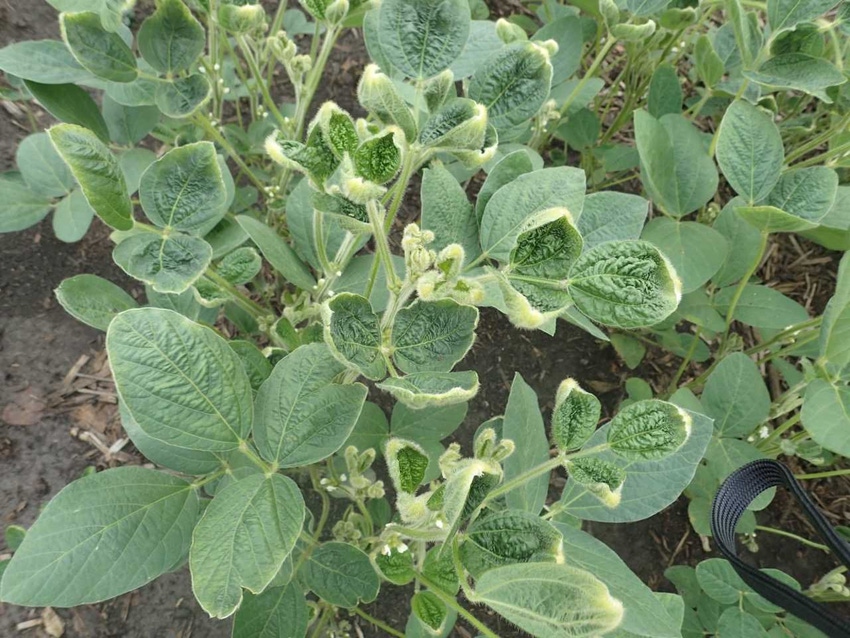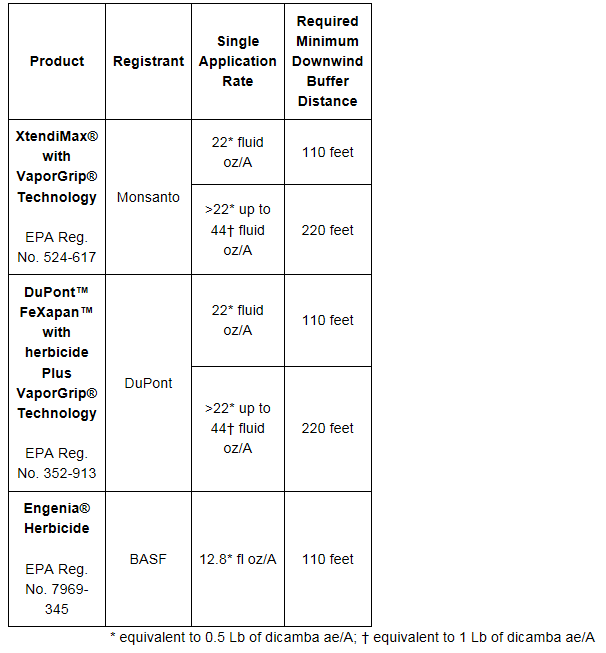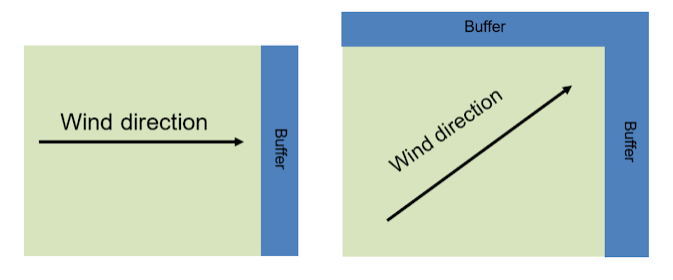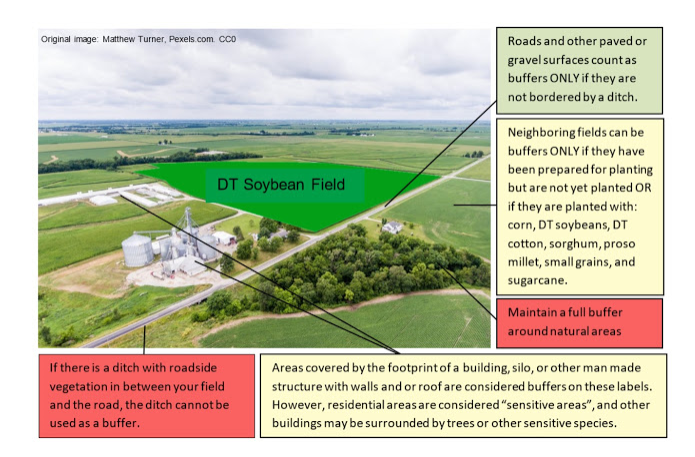
Buffers are one important tool in reducing off-target movement of pesticides to neighboring crops and sensitive areas. Given the high number of dicamba off-site movement complaints in 2017, applicators need to take special care this year. The following guidelines help to explain the label-mandated dicamba buffer requirements for 2018.
March 8, 2018

Source: University of Minnesota Extension
What size does my buffer need to be?
The three new dicamba formulations have slightly different buffer size requirements, so it’s important to pay attention to the specific label for the dicamba product you plan to use. In all cases, buffer sizes are not suggestions - they are legally mandated by the label. If there are waterways, native vegetation areas, or other sensitive sites near your field, consider a larger buffer distance than the minimum mandatory distances given below in the table. Applicators are held liable in all cases of off-target movement.

For all preplant, preemergence, or postemergence applications, the buffer zone is required only in the downwind direction of the field. However, if the wind is blowing at an angle relative to field edges, buffers must be maintained on both downwind edges of the field. It is advisable to check wind direction and speed not just at the start and finish, but during an application, as wind patterns may change over the application period.

What counts as a buffer?

Susceptible crops
All applicators are required to survey the site for neighboring non-target susceptible crops BEFORE spraying. Applicators must also consult applicable sensitive crop registries (for example https://driftwatch.org/) to identify any commercial specialty or certified organic crops that may be located near the application site. If the wind is blowing in the direction of a susceptible crop DO NOT spray until the wind has changed direction. Spraying is forbidden in these circumstances, even with a buffer. Susceptible crops include the following:
Non-DT soybeans
Cucumbers and melons (EPA crop group 9)
Flowers
Fruit trees
Grapes
Ornamentals including greenhouse-grown and shadehouse-grown broadleaf plants
Peanuts
Peas and beans (EPA crop group 6)
Peppers, tomatoes, and other fruiting vegetables (EPA crop group 8)
Potato
Sweet potato
Tobacco
What does “neighboring” mean?
Any sensitive plant species or sensitive area located next or adjacent to DT soybean field or next to the required downwind buffer distance would be considered “neighboring”.
Remember that avoiding spray drift at the application site is the responsibility of the applicator. The spray system and weather-related factors determine the potential for spray drift. The applicator is responsible for considering these factors when making application decisions to avoid spray drift onto non-target areas. Be sure to check for sensitive areas and susceptible crops by using tools like DriftWatch™ and consulting with your neighbors before spraying dicamba products.
Application requirements to reduce the potential for off-target movement
1.Spray only when wind speeds are between 3 and 10 mph, measured at boom height.
2.Do not spray during temperature inversions.
3.Spray only after sunrise and before sunset.
4.Use lower boom heights to reduce drift: no more than 24 inches above target crop or weed canopy.
5.Use minimum of 10 gallon/A (GPA) of spray volume for Engenia and 15 GPA for XtendiMax and FeXapan products.
6.Do not exceed a ground speed of 15 mph.
7.Avoid spraying in hot, dry conditions. Droplets are more likely to evaporate when humidity is low.
8.Check the specific product website no more than 7 days before application for a complete list of nozzles, drift reduction agents and other herbicides, pesticides and additives approved for use with dicamba:
1.Use only approved drift-reduction nozzles within the pressure ranges listed.
2.Use only approved tank mix partners listed.
3.Use approved drift-reducing agents when required for specified tank-mix partners.
9.In Minnesota, do not apply after June 20th.
10.In Minnesota, do not apply if the air temperature of the field, at the time of application, is over 85 degrees Fahrenheit or if the National Weather Service’s forecasted high temperature for the nearest available location for the day exceeds 85 degrees Fahrenheit.
You May Also Like



